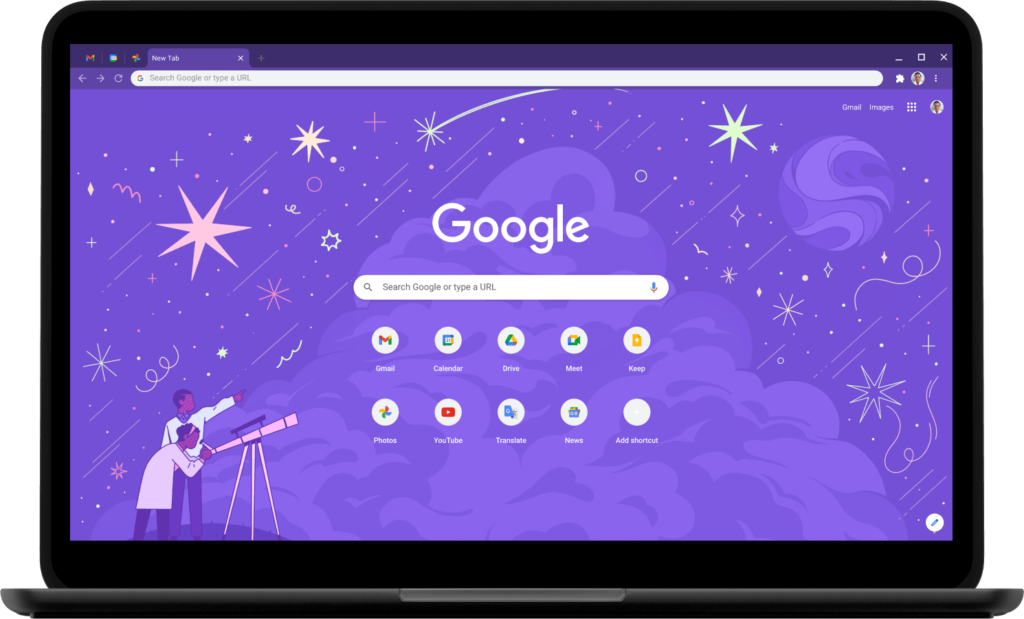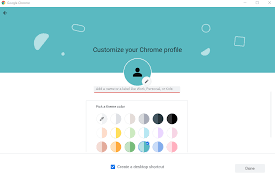Introduction
Unquestionably one of the most widely used web browsers, Google Chrome work is renowned for its quickness, ease of use, and compatibility with Google’s ecosystem. Millions of people use it all across the world to access work tools, browse the internet, and organize their digital duties. Google Chrome work is effective and easy to use right out of the box, but many users don’t fully utilize its hidden capabilities, which can improve surfing and greatly increase productivity. We’ll reveal some of Google Chrome’s best-kept secrets in this post and provide you the resources you need to maximize its functionality.

Understanding Chrome’s Power
Despite being a quick, safe, and adaptable browser, Google Chrome work has a lot of hidden capabilities that you may not be aware of. Web browsing is no longer the only thing to do. Beyond that, Chrome has features that might make your task more efficient rather than more difficult.
Although many users only make use of Google Chrome work’s fundamental features, including tabs, extensions, and bookmarks, there is a vast array of sophisticated options, keyboard shortcuts, developer tools, and hidden flags that are just waiting to be discovered. Whether you are managing your business, working remotely, or just surfing for personal purposes, becoming proficient with these tools can help you in your daily work.
Let’s explore some little-known functions and pointers that will make using Google Chrome work more productive.
Also Read: https://apkbeast.website/cryptocurrency-blockchain-new-era-digital-wealth/
Mastering Chrome’s Keyboard Shortcuts
Using keyboard shortcuts is one of the simplest methods to boost productivity in Google Chrome work. You may save a lot of time by using these shortcuts to navigate the browser without taking your hands off the keyboard. The following are some necessary keyboard shortcuts:
- To open a new tab, press Ctrl + T on Windows or Command + T on Mac.
- Close the current tab by pressing Ctrl + W (Windows) or Command + W (Mac).
- Reopen the last tab that was closed by pressing Ctrl + Shift + T (Windows) or Command + Shift + T (Mac).
- To navigate to the next tab, press Ctrl + Tab (Windows) or Command + Option + Right Arrow (Mac).
- To go to the previous tab, press Ctrl + Shift + Tab (Windows) or Command + Option + Left Arrow (Mac).
- To type a URL, focus on the address bar and press Ctrl + L (Windows) or Command + L (Mac).
- To browse privately, open an incognito window by pressing Ctrl + Shift + N (Windows) or Command + Shift + N (Mac).
- To search within the page, press Ctrl + F (Windows) or Command + F (Mac) to launch the “Find” tool.
- To access the Developer Tools console, press Ctrl + Shift + J (for Windows) or Command + Option + J (for Mac).
Acquiring knowledge of and using these shortcuts into your daily routine will expedite your work and facilitate seamless browser navigation.

Chrome’s Secret Settings (Flags)
The “flags” menu in Google Chrome work contains a number of experimental features. These are sophisticated settings that allow you to modify Google Chrome work’s look and feel. Despite not being formally included in the browser’s default settings, they have a significant impact on how Google Chrome work functions.
To go to these settings:
- In the address box, type chrome://flags and hit Enter.
- A list of experimental features will be shown to you.
Popular flags that are worthwhile to enable include:
- Lazy Loading: This setting shortens page load times by allowing Chrome to load videos and images only when they are in the viewport, or when you scroll down to them.
- Smooth Scrolling: Especially on lengthy pages, enabling smooth scrolling might improve the speed at which you navigate.
- Parallel Downloading: This option speeds up the downloading process by splitting the content into smaller parts.
- Tab Groups: Managing several projects or subjects is made simpler by the ability to group your tabs.
- GPU Rasterization: This feature enhances performance while loading large websites by rendering page content using your computer’s GPU (Graphics Processing Unit).
Click the “Enable” button next to each flag to turn it on, then restart Google Chrome work to observe the changes.
Also Read: https://apkbeast.website/life-insurance-ultimate-safety-secure-tomorrow/
Using Chrome Extensions to Supercharge Your Workflow
One of Google Chrome work’s most useful features is extensions. These are tiny apps that give your browser more capability so you may automate chores, increase productivity, and enjoy better browsing. These are a some of the best work extensions:
- Grammarly: An essential tool for professional writers, Grammarly checks your work as you type, whether you’re creating a report or an email. It also checks your spelling and grammar.
- LastPass: A password manager that saves you time and protects your accounts by safely storing and automatically filling in your login information.
- Trello: A browser-integrated project management application that facilitates task organization, team collaboration, and progress monitoring.
- Pocket: Arrange your stuff into a personalized collection by saving articles, webpages, and videos for later viewing.
- Tablo: A tab manager that improves efficiency by allowing you to group and arrange your tabs.
- Momentum: Substitutes a personal dashboard with a daily motivational message, weather reports, and a to-do list for your new tab page.
You may automate repetitive chores, optimize your productivity, and eventually accomplish more with fewer clicks by integrating the appropriate addons.

Harnessing Chrome’s Developer Tools for Better Work Insights
Although Google Chrome work’s Developer Tools (DevTools) may appear to be a tool exclusively for web developers, they provide several functions that might assist you with non-coding jobs. DevTools may provide you with important information whether you’re debugging a webpage, optimizing your own website, or examining browser performance. Here’s how to put them to use:
- To examine a webpage’s structure, right-click on it and choose “Inspect” from the menu. This is particularly helpful for SEO analysis, website issues, and comprehending the layout of a page.
- Network Analysis: You can view all of the queries your browser makes when loading a website, along with the loading times for each item, by selecting the “Network” tab in DevTools. When diagnosing slow website load times, this is helpful.
- Console for Debugging: The “Console” tab can assist you in looking for faults or warnings that may be impacting the performance of your page or browser, whether you’re a web developer or simply inquisitive.
- Performance Insights: You may record and examine a webpage’s activity while it loads using the “Performance” tab, which might help you find any bottlenecks that might be slowing it down.
- Lighthouse is a built-in auditing tool in Google Chrome work DevTools that can assess any webpage’s performance, accessibility, SEO, and best practices while making suggestions for performance enhancements.
Even if you are not skilled in coding, you may still maximize your google chrome work experience by learning how to use Google Chrome work’s Developer Tools.
Also Read: https://apkbeast.website/mastering-digital-marketing-dominate-online-world/
Chrome Profiles: Keep Your Work and Personal Browsing Separate
It can be difficult to maintain organization if you use Google Chrome work for both professional and personal purposes. But Google Chrome work comes with a built-in feature that lets you make distinct profiles, each with its own history, extensions, and bookmarks.
To create and switch between profiles, follow these steps:
- In Chrome’s upper-right corner, click the profile symbol.
- To create a new profile, click “Add.”
- To access a different work or personal environment, sign in using a different Google account.
You may make your online activities more organized and minimize distractions from interfering with your productivity by setting up distinct profiles for work, school, and personal browsing.

Managing Tabs Like a Pro
One of Chrome’s main advantages is its tab management. It might get challenging to efficiently navigate through hundreds of tabs that are open at any given time. Here are some tips for tab management:
- Tab Pinning: To ensure that key tabs remain open at all times, right-click on a tab and choose “Pin”. Even if you open new tabs, pinned tabs stay in place and are smaller.
- As previously said, Tab Groups allow you to group related tabs together. Give a tab a name and color by right-clicking on it, choosing “Add to New Group,” and then clicking “Add.”
- Use the Tab Search function to swiftly locate a particular tab if you have too many open by clicking the dropdown arrow next to the tab bar or by hitting Ctrl + Shift + A (Windows) or Command + Shift + A (Mac).
- Suspend Tabs: To improve Chrome’s efficiency and free up system resources, extensions such as The Great Suspender automatically suspend tabs that you haven’t used in a long time.
Keep Chrome Clean and Fast
Performance can be slowed down by Chrome getting cluttered over time with cookies, cached data, and superfluous extensions. To maintain Chrome’s optimal performance:
- Clear Cache and Cookies: You can keep your browser from becoming slow by routinely deleting cached files and cookies.
- Disable Unused Extensions: Uninstall any extensions you no longer require or disable any that you aren’t using.
- Update Chrome: Make sure you’re always using the most recent version of Chrome because security patches and performance enhancements are frequently included in updates.
To make your browser cleaner:
- Open Chrome at chrome://settings/clearBrowserData.
- Select which items (cookies, cache, and browsing history) to delete.
- After choosing the time frame, click “Clear Data.”
You may minimize needless distractions and guarantee peak performance by routinely cleaning Chrome.
Conclusion
Google Chrome is a flexible browser that can be an effective tool for efficiency at work and in personal life. By becoming proficient with its developer tools, shortcuts, extensions, and hidden features, you may improve your performance by creating a more streamlined and effective workflow. Learning how to use Chrome can help you get more done in less time, regardless of whether you’re a professional, student, or casual browser.
You’ll find that Google Chrome is a potent productivity tool in addition to being a tool for web browsing if you include these pointers into your everyday routine.